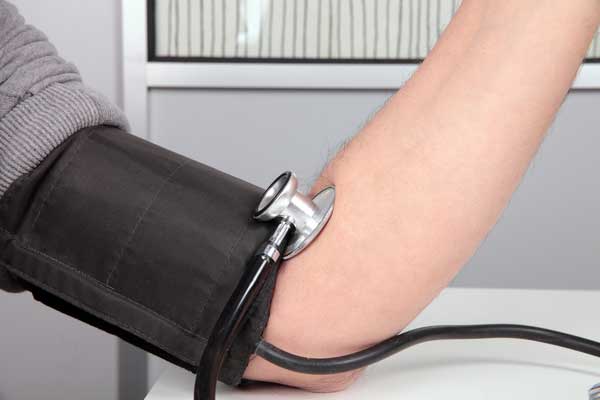High blood pressure is a serious health condition that can lead to stroke, heart attack, kidney disease, and other problems if left uncontrolled. Keeping your blood pressure within a healthy range is critical for protecting your overall health.
One of the best ways to manage blood pressure is through at-home monitoring. When done correctly, home blood pressure readings provide a more accurate picture of your true average blood pressure compared to occasional measurements at the doctor’s office.

Read on to learn tips and best practices for accurately measuring your blood pressure at home.
Use Proper Positioning and Environment
To get the most accurate home blood pressure readings, start by using proper positioning and setting up a calm environment. Here are some tips:
- Use an arm blood pressure monitor, not a wrist monitor. Upper arm cuffs tend to be more accurate.
- Make sure to empty your bladder first if you need to urinate. A full bladder can elevate readings.
- Sit in a supportive chair with your back straight, feet flat on the floor, and arm rested on a flat surface at heart level. Avoid reclining or crossing your legs.
- Take your readings in a quiet, peaceful room without distractions. Breathtaking measurements when you are relaxed.
- Avoid eating, drinking caffeinated beverages, smoking, or exercising within 30 minutes before taking a reading. All of these can temporarily increase blood pressure.
Use Proper Cuff Positioning
In addition to your body positioning, proper cuff positioning is vital for accuracy. Follow these cuff tips:
- Place the cuff directly on your bare upper arm, not over clothing. Roll up sleeves if needed.
- Position the bottom edge of the cuff about 1 inch above the elbow crease. Center the inflatable part over the inner arm.
- Wrap the cuff snugly so that two fingers can fit under, but it’s not too loose. You should not be able to pinch excess fabric.
- Keep your arm relaxed at heart level during inflation and reading. Don’t tense the arm muscles.
- Remove tight jewelry from the arm you are using to prevent interference.
Take Multiple Readings
Don’t rely on just one blood pressure reading to get the full picture. Take at least two readings spaced 1-2 minutes apart. The first reading can sometimes be elevated due to anxiety.
You may need to take readings more than twice if the measurements vary significantly. Discard the first reading and average the remaining numbers.
Taking multiple readings helps account for natural fluctuations in blood pressure. The average will provide a more reliable estimate of your overall blood pressure.
Take Readings at Consistent Times
Discuss with your doctor what time of day they want you to take your home blood pressure measurements.
Often, first thing in the morning before taking blood pressure medication is ideal. But some people experience very high readings in the morning that normalize later in the day, so a different time may be recommended.
Whenever you measure, try to test at the same time of day under similar conditions as much as possible. This ensures consistency needed to identify trends over time.
Track and Record the Readings
Be sure to write down all your blood pressure measurements, dates, and times taken. Bring these records to share with your doctor.
Tracking home readings over time provides crucial insight. Your physician can analyze the data to see if medication adjustments may be needed.
There are also apps and monitors that automatically save and track your readings. But it’s still a good idea to manually record as well in case technology fails.
Know When to Take Action
Most of the time, slightly elevated home blood pressure readings are not an emergency on their own. But notify your doctor promptly if:
- Readings are consistently over 140/90 mm Hg
- You experience symptoms like severe headaches, vision changes, chest pain, difficulty speaking, or one-sided numbness/weakness
- You are pregnant and home readings stay above 120/80 mm Hg
- Readings are suddenly much higher or lower than usual
- You are experiencing side effects from BP medications
- You notice an irregular heart beat during readings
Choose an Accurate Home Monitor
Not all home blood pressure monitors are created equal when it comes to accuracy and ease of use. Consider these tips for selecting one:
- Choose a monitor that wraps around the upper arm, not the wrist.
- Look for a monitor validated by independent organizations like the British Hypertension Society or European Society of Hypertension.
- Select a monitor with a cuff that fits your arm size. Using the wrong cuff size can lead to errors.
- Consider getting an automated monitor with built-in tracking if you struggle to record readings.
- Make sure the monitor has easy-to-read digital displays. Analog dial monitors tend to be less accurate.
Conclusion
Monitoring blood pressure at home is important for maintaining heart and kidney health, but only if done properly. Use an accurate monitor and proper positioning, take multiple readings at consistent times, and keep detailed records. Notify your doctor promptly about any concerning readings. Consistent home monitoring combined with healthy lifestyle choices offers the best protection against high blood pressure and its complications.
